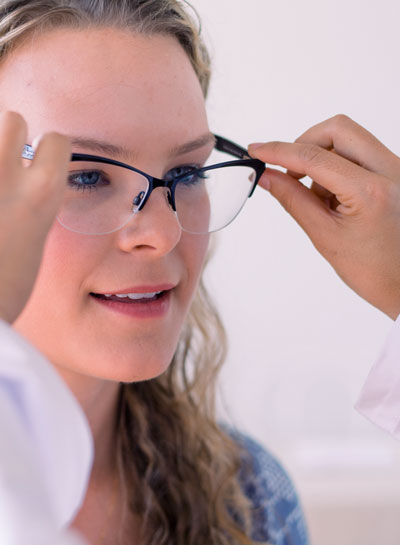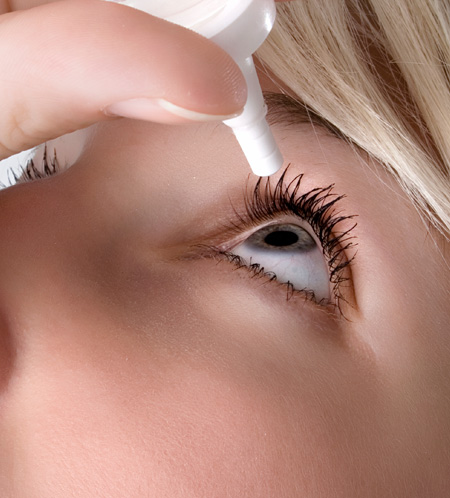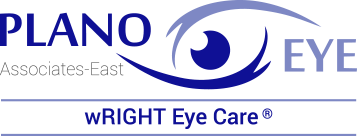Eye Care
Accidents & Injuries
While the term “pink eye” often refers to an infection of one or both eyes, the condition can be highly contagious and the necessary treatment can be widely variable. Many cases first thought to be presenting as a “pink eye” have been found to involve a different diagnosis and require a completely different treatment approach.
Similarly, a “red eye” can represent any number of eye-related conditions ranging from the benign and self-limited to the acute and vision-threatening. In general, if you experience any pain or unexplained change in vision, you should contact an eye care professional immediately.
Whenever in doubt or if in need of a professional opinion, just call or email our office to schedule your consultation and evaluation. Protect one of your greatest gifts, the gift of sight.
At Plano Eye Associates, we provide the diagnosis and treatment of many injury related events and offer full service preventative measures and advising. In many cases, time will be of the essence.
In general, chemical or foreign body injuries should be thoroughly irrigated and be brought for examination at the soonest opportunity.
Blunt force injuries should be quickly stabilized with an external ice compress and also be brought for examination at the soonest opportunity.

Cataracts
A cataract is the name used to describe when the lens becomes cloudy or opacified. With enough time, aging and exposure to the sun’s rays, nearly all eyes will develop some amount of cataract. When vision begins to be affected by a cataract, surgical treatment is typically recommended, especially when poor vision causes difficulties with the activities of daily living.
The treatments for cataracts have evolved quite a bit over the years. Using the current technologies available, cataracts can generally be treated during a quick outpatient procedure through a clear-cornea, no-stitch surgery. This means that generally speaking, suturing is not required or necessary, and this approach makes the recovery period even easier.
At Plano Eye Associates, we will recommend the best treatment for cataracts, including the break-up and removal of the cloudy lens material (a process called phacoemulsification) with a technology that uses focused ultrasound energy. Cataract treatment is completed with the placement of a new high-tech intra-ocular lens (IOL). Many options exist for these IOL’s including newer lens implant technologies which assist in distance and near vision improvements, such as the Acrysof ReSTOR lens or even the new CRYSTAL lens implant. These intraocular lenses can decrease the dependence on glasses and make many patients completely independent and free from glasses. Pre-operative measurements assist in determining the best possible IOL strength needed to maximize the vision outcome of the cataract surgery. These options are reviewed and personalized during cataract consultations.
If you are interested in contact lenses, let us know and in addition to your eye health evaluation, we will perform a contact lens exam to determine if your eyes are suitable for contact lenses and which lenses are best for your individual needs.
Diabetic Exam
Diabetes is one of the leading causes of vision loss and disability in the U.S. Both insulin-dependent (type I) and non-insulin dependent (type II) diabetics are at a greatly increased risk for vision and eye-related problems, including diabetic retinopathy. Diabetes can and does impact every aspect of the visual system, especially when blood sugar is poorly controlled. Diabetes has an impact on the eye primarily because elevated blood sugar levels (hyperglycemia) can cause a signal for new blood vessel growth (called neovascularization) both inside and outside of the eyes. These new blood vessels are dangerous because they grow into areas in which they do not belong and have a tendency to start leaking. When blood or proteins leak from these blood vessels or even from other “normal” blood vessels, vision can be mildly to severely impaired. One of the greatest dangers for patients with diabetic retinopathy is that damage from hyperglycemia on the eyes can go largely unnoticed and progress silently until dramatic and sudden vision loss occurs. Routine eye examinations along with preventive measures and interventions as needed can be vision saving.
At Plano Eye Associates, we encourage all diabetics and those with borderline blood sugars to participate in routine eye examinations and eye health education programs geared toward diabetics. Professional eye care along with the close monitoring of blood sugar, under the supervision of an endocrinologist, internist, family practice physician, or even pediatrician, can make all the difference in the long-term effects of diabetes and the risks of visual impairment. Blood glucose monitoring, a carefully planned and controlled diet, a proper exercise regimen, and close compliance with any prescribed medication plan, along with evaluation of the HbA1c blood test every three months are all critical steps to winning the battle against diabetes.
I want to give you the information you need to help you decide if laser vision correction is right for you.
Dry Eyes
Dryness and allergies are very common conditions. Many different conditions can produce a deficiency of one or more layers of a healthy tear film and a secondary ocular irritation pattern. Usually, the cause of dry eyes relates to a decrease in tear production, tear-film instability, or increased tear film evaporation, or even a combination of these 3 factors.
Keep in mind that Vitamin A deficiency and some forms of acne will also contribute to dryness of the eyes. Allergies may be seasonal, non-seasonal (atopic), eye-drop related or contact lens related.
Fortunately, many treatment options are available and each can be adjusted according to the severity or needs of each patient. As a tip, artificial tear eye drops, particularly those which are preservative free, can be tried as an initial therapy and often give some degree of benefit.
To assist with and resolve any symptoms you may be experiencing, contact our office to schedule your consultation and evaluation today!

Glaucoma
Annual visits for the general population and semi-annual or more frequent evaluations for those at higher risk are highly recommended. For those with any family history of glaucoma or a predisposition toward this condition, close monitoring of the optic nerves is essential.
Besides vision monitoring, eyes affected by glaucoma must be followed for their intra-ocular pressures (or IOP’s), their peripheral vision (through visual field testing) and their optic nerve health status (through pupillary dilation and recording of subtle changes in the nerve’s appearance). Treatments, specific to the needs of each patient, include medical, laser, and surgical options. The keys to success in glaucoma, with the goals of maximal vision retention and improvement, can best occur through early diagnosis and therapeutic treatments.
At Plano Eye Associates, we can answer all your questions and concerns about glaucoma as well as the following related conditions:
Normal tension glaucoma – a condition where glaucoma exists in the setting of normal IOP
Ocular hypertension – a condition where the IOP is elevated but without established glaucoma
Glaucoma suspect – a condition where glaucoma is likely to develop but has not yet done so.

Eyelids & Positioning
Both cosmetic and functional eyelid procedures are necessary at some point in our lifetime. Cosmetic procedures seek to refine the facial aesthetics and beauty while functional procedures return the proper orientation and positioning to tissues which have deviated from these alignments in order to return or maximize the functioning role of the entire system.
Often, functional and cosmetic needs will overlap and a single procedure will improve or resolve both of these areas. Blepharoplasty, entropion repair, ectropion repair, ptosis repair, and removal of eyelid or skin lesions are all options that are available to any patient and can be personalized to each individual’s needs and desires.
Eye Health Exam
Routine annual eye examinations and vision testing are highly recommended for patients of all ages. From children to seniors, examination of the eyes can be very useful for the early identification and prevention of both eye-related illnesses and general health concerns. In fact, the eyes are the only place within the body where blood vessels can be directly visualized. Thus, examination of the eye and retina can give unique insights into the health of the body’s entire blood or vascular system.
The opportunities for visual improvement are also greater than ever. Through prevention, proper nutrition, dietary supplements, the diligent use of eye medications, optical, laser, & surgical approaches, most eyes can be benefited and improved in the quality of images they create. These enhanced images can in turn affect the overall quality of vision, one of our major sensory inputs. Comprehensive eye examinations which include testing for visual acuity, clarity, visual fields, contrast sensitivity, depth of field (stereopsis), and suggestions for treatments as needed, can directly impact our quality of life.
Of course, anytime vision and eye-related problems do occur, early evaluation and treatment can make all the difference. Rapid diagnosis and intervention can restore and improve vision and also improve the appearance of the eyes themselves.
Many excellent options are now available for out-patient refractive surgery procedures, contact lenses, and designer eyewear, all tailored to your needs.
Macular Degeneration
This condition tends to be prevalent in increasing numbers among the elderly and is the leading cause of blindness in the U.S. in patients over 65 years old. Macular degeneration is also the most common cause of vision loss in the Western world. With the aging of the baby boomer generation, a great many people are at risk for this condition which has been called “the silent thief of vision.”
Risk factors other than increasing age include a positive family history, cigarette smoking, farsightedness (hyperopia), light eye or iris color, high blood pressure (hypertension), high cholesterol, heart disease, nutritional factors and light toxicity.
The condition generally exists as two types, “dry” AMD which accounts for 90% of cases and “wet” AMD which accounts for 10% of cases. Like most eye conditions, early diagnosis is critical to successful rehabilitation and to maximize the ultimate vision potential. Vision loss or difficulty is generally gradual and affects the central portion of vision. A great deal of promising research and advances are now occurring for treatments of macular degeneration, particularly the “wet” form. More treatments for “dry” AMD appear to be on the horizon as well.
At Plano Eye Associates, we have access to the most up to date investigational research, available options, and resources for macular degeneration. Proper supplementation options and education are also available and emphasized. As a caution, for example, smokers should not take higher doses of beta carotene due to the recent findings of an increased risk of lung cancer (AREDS study). Current treatment options are tailored to the particular type of macular degeneration either wet or dry. With optimal supplementations (dietary and eye antioxidants), education, laser treatments, and the most recent medications which help to prevent new blood vessel growth in the retina, the potential for success against macular degeneration is rapidly improving. Contact our office to schedule your consultation and evaluation today.
